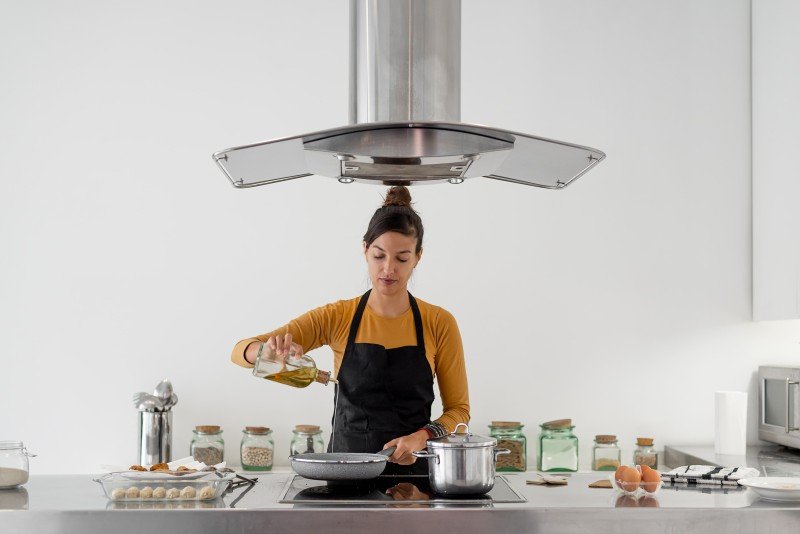An In-Depth Guide to Ovens and Hobs: Choosing the Right Appliances for Your Kitchen
When it pertains to equipping a kitchen, ovens and hobs are significant players. These home appliances not only dictate the effectiveness of cooking procedures however likewise add to the total visual and functionality of the kitchen environment. This post will explore the different types of ovens and hobs, their functions, and considerations to bear in mind when purchasing, along with helpful FAQs to assist readers gain a much deeper understanding of these essential kitchen devices.
Comprehending Ovens
Ovens are created to cook food using heated air. They can be found in different types, each with unique performances.
Types of Ovens
- Conventional Ovens: These are the most common types. They utilize a heating element at the bottom, which heats up the air inside the oven.
- Convection Ovens: Equipped with a fan and exhaust system, convection ovens flow hot air uniformly around the food, resulting in quicker and more even cooking.
- Microwave Ovens: These utilize electro-magnetic waves to heat food. They are perfect for reheating and cooking food in minutes.
- Steam Ovens: These use steam for cooking, which helps retain moisture in foods and preserve nutrients.
- Wall Ovens: Built into kitchen walls, these ovens save area and often come geared up with sophisticated functions.
- Double Ovens: These include two separate oven compartments, enabling for numerous meals to be prepared all at once at various temperatures.
Key Features to Consider in Ovens
When choosing an oven, customers should think about the following functions:
- Size: Ensure that the oven fits into your kitchen space while accommodating your cooking needs.
- Oven Capacity: Depending on family size and cooking routines, bigger capacities may be required.
- Temperature level Range: A wider range allows for flexible cooking techniques.
- Energy Efficiency: Look for energy-efficient designs to minimize energy costs.
- Smart Technology: Many modern ovens use Wi-Fi connection and programmable functions for convenience.
Exploring Hobs
Hobs, or cooktops, are necessary for stovetop cooking. They can be different based upon their heating methods and features.
Types of Hobs
- Gas Hobs: These utilize gas flames for cooking and provide immediate heat, making it much easier to manage temperatures.
- Electric Hobs: These utilize electric coils or a glass-ceramic surface for cooking. They are frequently much easier to clean and maintain.
- Induction Hobs: Using electro-magnetic fields, induction hobs heat up only when suitable cookware is positioned on them, making them energy-efficient and more secure.
- Dual-Fuel Hobs: Combining gas and electric elements, dual-fuel hobs use the best of both cooking methods.
Key Features to Consider in Hobs
When buying a hob, consider these features:
- Number of Burners: Depending on cooking needs, customers might prefer hobs with numerous burners.
- Size: Ensure it fits well with your available kitchen counter area.
- Security Features: Look for automated shut-off and kid lock functions for added safety.
- Reduce of Cleaning: Smooth surface areas tend to be easier to clean than conventional coils.
Ovens and Hobs Comparison Table
| Feature | Oven Type | Hob Type |
|---|---|---|
| Cooking Method | Baking, Roasting, etc. | Boiling, Frying, etc. |
| Preheat Time | Differs | Instantaneous for Gas |
| Temperature Control | Thermostat | Manual/Knob |
| Energy Efficiency | Energy rating varies | Depend upon type |
| Cleaning up Flexibility | Self-cleaning choices | Smooth vs. Coiled |
| Smart Features | Wi-Fi, App control | Limited functions |
Often Asked Questions (FAQs)
1. What is the distinction between a traditional oven and a convection oven?
Conventional ovens depend on heating aspects, while convection ovens make use of a fan to distribute hot air for more even cooking.
2. Fan Oven Sale for families?
Yes, induction hobs are considered more secure as they only heat up when pots and pans is put on them and cool down rapidly when gotten rid of.
3. How do I clean my oven successfully?
Self-cleaning features can streamline this process, but for manual cleaning, use a sodium bicarbonate and vinegar paste to assist remove hard spots.
4. Is it worth buying a double oven?
For those who frequently prepare big meals or delight in baking multiple meals at the same time, a double oven can be extremely advantageous.
5. What size hob should I acquire?
This mainly depends on your cooking requirements and readily available counter space. Typical sizes include 60cm and 90cm hobs.
Picking the right oven and hob is vital for any kitchen. Each type comes with its special functions suited for various cooking requirements and styles. Comprehending the differences between ovens and hobs, in addition to their particular functionalities, can help consumers make informed choices. As innovation advances, more options are offered that combine efficiency and functionality, guaranteeing that cooking stays a pleasant and efficient part of everyday life. In picking appliances that best fit your cooking design, you can transform your kitchen into a center of cooking creativity.

